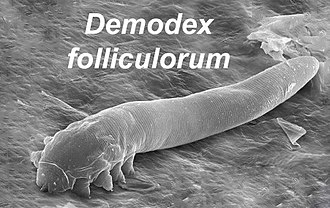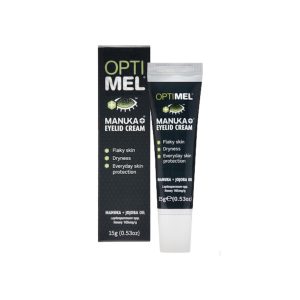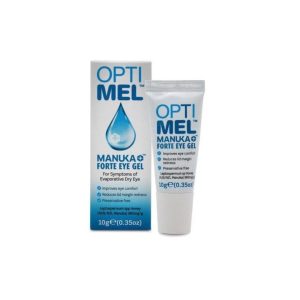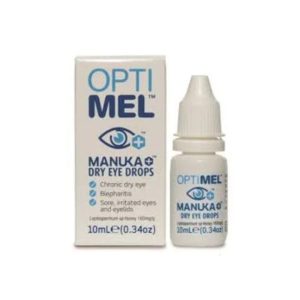Are you experiencing persistent dryness, irritation, or discomfort in your eyes? If so, you could be among the many individuals affected by a chronic dry eye condition that may be linked to Demodex mites. These microscopic, eight-legged organisms are a natural component of the human skin microbiome, particularly in areas around the eyes and eyelids. However, when their population exceeds normal levels, it can lead to inflammation and exacerbate the symptoms associated with dry eye syndrome, resulting in significant discomfort and distress.
If you have been struggling with unexplained dry eye issues, it is crucial to explore whether Demodex mites might be contributing to your condition. This comprehensive guide will help you recognize the signs of a Demodex infestation, clarify the connection between these mites and dry eye disease, and present effective treatment options to manage their population and relieve your discomfort.

Recognizing the Key Symptoms of Demodex Blepharitis for Prompt Action
Individuals affected by Demodex Blepharitis or an overabundance of these mites frequently encounter a range of distinctive symptoms. Common signs include:
- Burning, stinging, or gritty sensations in the eyes that are especially noticeable as the day progresses.
- Unexplained excessive tearing or watery eyes not linked to allergies or environmental factors.
- Red, inflamed eyelids accompanied by irritation of the skin surrounding the eyes.
- Crusty, dandruff-like buildup along the lashes and eyelid margins, often appearing as collarettes.
- Increased sensitivity to light, creating the sensation that your eyes are perpetually squinting.
- Fluctuating episodes of blurred vision throughout the day.
Many people endure these dry eye symptoms for years, often unaware that a Demodex mite infestation may be a significant underlying cause. Recognizing these symptoms is a crucial step in effectively addressing the root issue and finding appropriate relief.

Unveiling How Demodex Mites Cause Dry Eye Symptoms and Discomfort
Wondering how these minuscule organisms can lead to such distressing dry eye symptoms? Demodex mites thrive on the oils and cells present on the skin, particularly in the hair follicles of your eyelashes. As they feed, they produce waste products, eggs, and remnants of deceased mites, which accumulate along the eyelid margins. This buildup results in a dense layer of debris and a bacterial biofilm that can obstruct the delicate oil glands essential for maintaining optimal eye health.
When these oil glands fail to release adequate oils, it leads to the rapid formation of dry patches on the eye’s surface. The oily tear film is critical for preventing the quick evaporation of the watery tears that keep our eyes moist and comfortable. Furthermore, the inflammation caused by the blockage can intensify eye irritation, redness, and the uncomfortable gritty sensation commonly associated with dry eye conditions.
Mastering the Life Cycle of Demodex Mites for Targeted Treatment Strategies
Understanding the life cycle of Demodex mites is essential for implementing effective treatment strategies. These mites undergo distinct life stages: egg, larva, nymph, and adult, with a life cycle that spans approximately 14 to 21 days. They are most active during the night, emerging from their hair follicles to mate and lay new eggs on the skin’s surface.
This nocturnal behavior suggests that the optimal time to apply Demodex treatments is during the evening, just before bedtime. Targeting the mites when they are most active can significantly enhance the effectiveness of your treatment. However, due to their rapid reproductive capabilities, any surviving mites can quickly repopulate, making continuous treatment essential over several weeks or even months to achieve lasting results.
Effective Strategies for Managing Demodex-Related Dry Eye Issues Successfully
If your optometrist confirms a high presence of Demodex mites through eyelash sampling or microscopic examination, they may recommend a variety of treatment options to combat the infestation:
1. Harnessing the Power of Tea Tree Oil Eyelid Wipes and Scrubs for Relief
Products containing tea tree oil are known for their potent antimicrobial and antiparasitic properties, making them incredibly effective in eliminating mites. These formulations can efficiently remove surface mites, break down collarettes produced by these pests, and help dislodge buried mites, rendering them more susceptible to treatment.
While tea tree oil is effective against mites, it may cause stinging upon application and could be cytotoxic to healthy cells, potentially aggravating symptoms for some users.
Consistent application of tea tree oil eyelid wipes or scrubs before bedtime can gradually reduce the mite population. A notable example of an effective tea tree oil treatment is OcuSoft Oust Foam, which is particularly beneficial for managing blepharitis primarily caused by Demodex mites.
2. Employing Gentle Hypochlorous Acid Lid Hygiene Sprays for Safe Daily Use
Hypochlorous acid is a naturally occurring substance produced by our immune system that serves as an effective antimicrobial agent. It is gentle on the eyes, does not cause stinging, and is safe for cellular health.
Disinfecting lid sprays and cleansing foams containing hypochlorous acid not only eliminate mites but also help reduce inflammation and provide symptomatic relief. Applying these solutions to the lash lines before bed can effectively eradicate mites and their debris. Many of these products have a distinct odor reminiscent of chlorinated pool water. Popular hypochlorous acid-based solutions include Ocusoft Hypochlor Spray and Avenova.
Among these, Ocusoft Hypochlor Foam is often recommended due to its superior value and extended shelf life after opening, making it a practical choice for ongoing management of Demodex-related issues.
3. Exploring the Benefits of Manuka Honey Solutions for Eye Care
Recent studies suggest that Manuka Honey solutions may be as effective as 50% tea tree oil against Demodex, although more research is required in this area. While it may cause a slight sting upon application, Manuka Honey is generally less irritating than tea tree oil and demonstrates excellent efficacy against various forms of blepharitis. It is non-cytotoxic and less likely to provoke inflammation in the eyelids.
Many patients report that any initial sting is well worth it, as they often experience significant relief afterward. Manuka Honey solutions are available in gel form (such as Optimel Forte, which is more effective but may sting more) and as drops (like Optimel Drops, which are easier to apply and sting less).
4. Addressing Severe Demodex Infestations with Oral Anti-Parasitics
In cases where Demodex overpopulation is severe and persistent, healthcare professionals may choose to prescribe oral antiparasitic medications. For instance, formulations such as Ivermectin in pill form have shown effectiveness in managing these infestations. Additionally, weekly doses of oral tea tree oil supplements taken over several months can help maintain mite levels in check and provide prolonged relief from symptoms.
5. Exploring Professional Treatments for Advanced Demodex Management
Some eye clinics offer specialized in-office treatments specifically designed for Demodex management, utilizing targeted products such as Oust Demodex Cleanser Swabstix or a handheld electric brush known as BlephEx.
The Oust Demodex Cleanser Swabstix provides targeted treatment options that can be highly effective in mitigating the impact of these bothersome mites and improving overall eye comfort.
The Article: Demodex Mites Linked to Chronic Dry Eye Issues first appeared on https://writebuff.com.
The Article Demodex Mites and Their Connection to Chronic Dry Eye Was Found On https://limitsofstrategy.com





It’s fascinating to consider the role that Demodex mites play in our eye health, something that seems so minor can have significant implications on our overall well-being. Personally, I experienced prolonged irritation and discomfort before finally discovering that these mites could be a factor. The treatment options available today are quite enlightening, especially with advancements in technology that help target these infestations more effectively.
This topic resonates with me deeply, as I’ve recently been dealing with persistent eye discomfort myself. It’s fascinating—and a bit unsettling—to think about how something as tiny as Demodex mites can have such a significant impact on our well-being. I had never considered their role in dry eye issues until I came across some anecdotal evidence from friends who found relief after addressing Demodex infestations.
Isn’t it fascinating how something as tiny as a mite can have such a significant impact on our eye health? I’ve been dealing with persistent dryness too, and learning about the connection to Demodex mites was a real eye-opener (no pun intended). It makes me wonder about the importance of maintaining a balanced skin microbiome beyond just our faces.
You’re spot on about mites and their stealthy influence on eye health. It’s wild how these minuscule creatures can stir up such a big fuss. Dryness can really mess with daily life, and it’s interesting to think about how our skin’s microbiome plays a part in that. It’s not just our faces that need attention—our entire body’s ecosystem matters.
I completely agree with you about the subtleties of how these tiny mites can have such a significant impact. It’s fascinating how interconnected our body is, especially when we consider our skin’s microbiome—the balance of good and bad bacteria that really makes a difference in our overall health.
I really appreciate how you captured the complexity of the skin’s microbiome. It’s incredible to think about how these tiny mites play such a pivotal role in our health, often going unnoticed. I’ve been reading up on the emerging research around the human microbiome and the impact of lifestyle choices on it—things like diet, stress, and even the products we use on our skin.
Isn’t it interesting how something so small can shape our health in unexpected ways? The connection between Demodex mites and eye dryness really highlights the complexity of our bodies and how we often overlook these little beings that coexist with us. A lot of people don’t realize that these mites are generally harmless and even a normal part of our skin’s ecosystem. However, when their numbers grow out of balance, they can contribute to issues like inflammation and dryness, especially around the eyes.